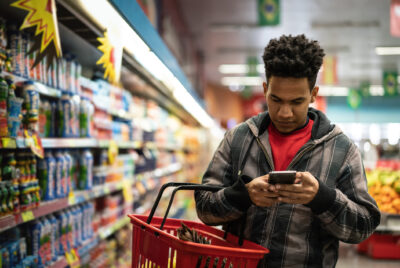With Dry January over and Super Bowl Sunday on the horizon, drinking-age Americans will be put to the test again: To beer or not to beer?
In an opinion piece for USA Today Network, Andy Keenan, executive vice president and general manager at Advantage Solutions, suggests that a growing number of legal-age consumers intend to keep that “dry” part going — perhaps forever.
“Much ink has been spilled in recent years about a shift, particularly among younger drinkers, away from alcohol,” says Keenan. “Some dubbed this group ‘sober curious.’ Today, we may as well brand them sober loyalists — and their numbers are growing.”
Some 21% of U.S. adults reported they were practicing reduced alcohol consumption for Dry January this year — the highest level recorded since polling began in 2021, and up 6 percentage points from 2023, according to a January survey conducted by Morning Consult Pro. So for many, the Super Bowl — followed closely by Valentine’s Day — represents the first real social test of the year.
While data show the majority of drinkers will still reach for a beer during the Super Bowl or a glass of bubbly while at a Galentine’s Day gathering, an increasing number are choosing to abstain — if not altogether, then at least by consuming less. Plus, as social acceptance of the movement takes hold, non-drinkers are celebrating sober — and without judgment.
“I see this trend first-hand every day in conversations with retailers around the country,” says Keenan. “Retailers pride themselves on being at the forefront of consumer trends and are committed to meeting new and fast-moving customer demands. With our industry experience and expertise, they rely on us and our front-row seat on this changing retail landscape.”
It wasn’t until the pandemic in the U.S. that the NA industry really kick started, Keenan points out, led by a trend among suddenly house-bound shoppers who were focusing more on their health and wellness.
The market quickly followed, and mocktails and other NA options started popping up everywhere from high-end cocktail bars to a grocer’s aisles, packaged in eye-catching, cleverly branded cans. More appealing options in turn led to more interest among consumers.
Generational shifts have also played a part in this trend. Studies show that younger consumers witnessed the effects of alcoholism on older members of their family and take steps to avoid that. They want to stay level-headed and in control of their social image. They have also flocked to so-called functional beverages and other products to moderate their moods, including cannabis.
The result is a migration away from alcohol in staggering numbers. One stat stands out here: College students refraining from alcohol increased to 28% in 2018 from just 20% in 2002, according to a study published in JAMA Pediatrics.
But fear not, alcohol beverage industry. “Alcohol is not, by any measure, on the way out,” Keenan says. “The NA beer and mocktail market is still a fraction compared to the alcohol-beverage market. Come Super Bowl and Valentine’s Day, plenty of Americans will be cracking a couple of traditional beers, a glass of wine or a full-strength cocktail.”
And those Dry January participants? “Count them among those raising a toast,” he adds. “Nationally, 18% of Dry January participants admitted to drinking more alcohol in February to compensate.”




